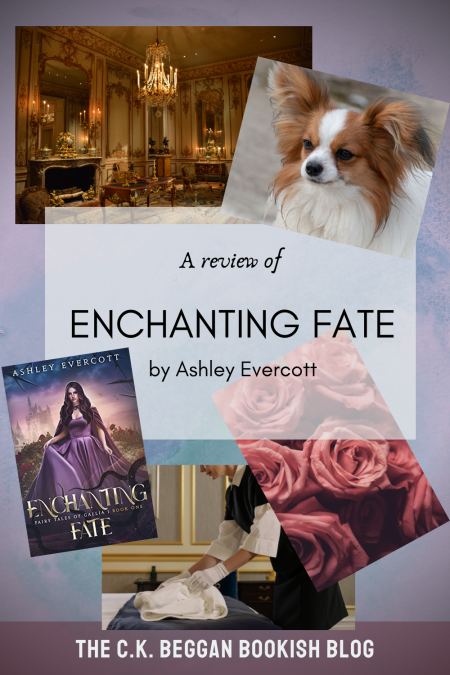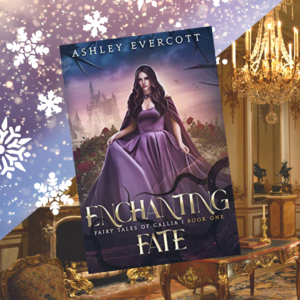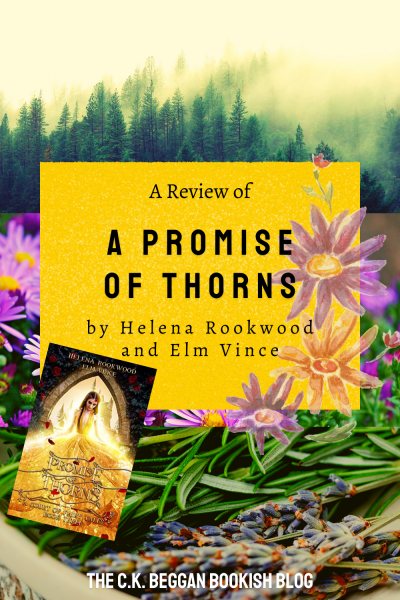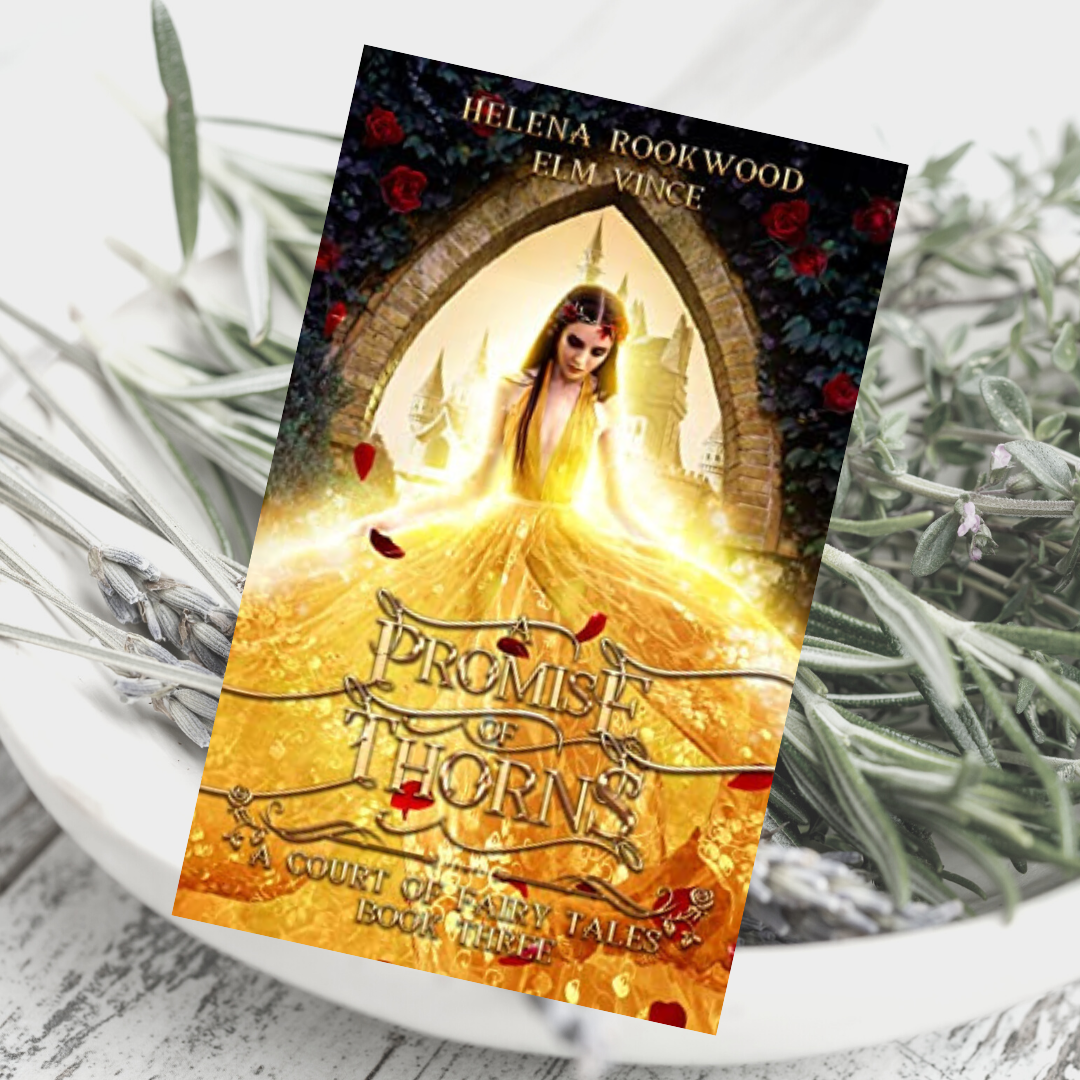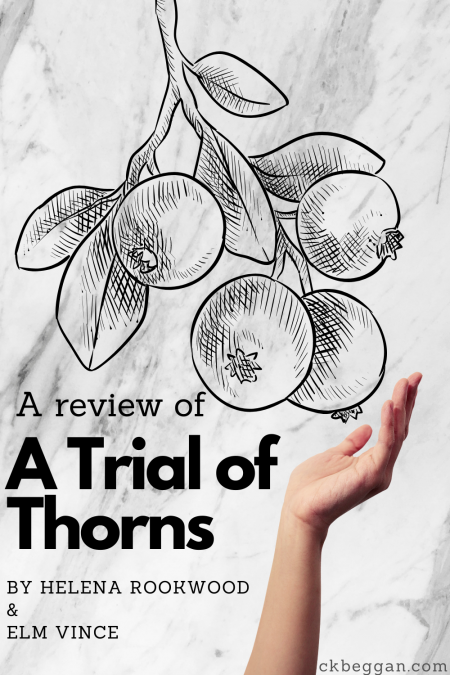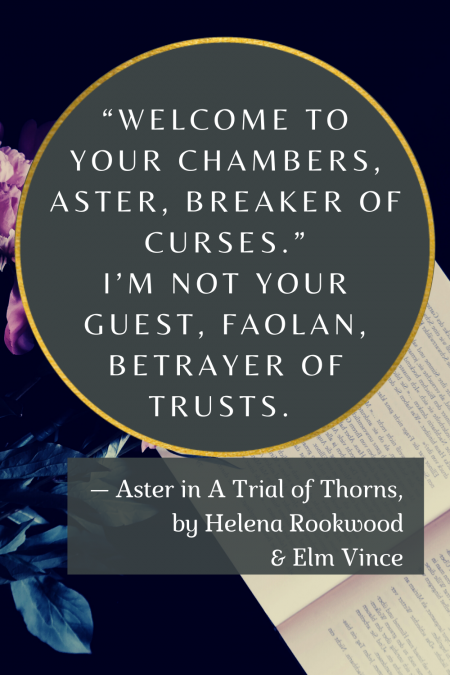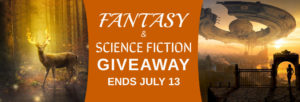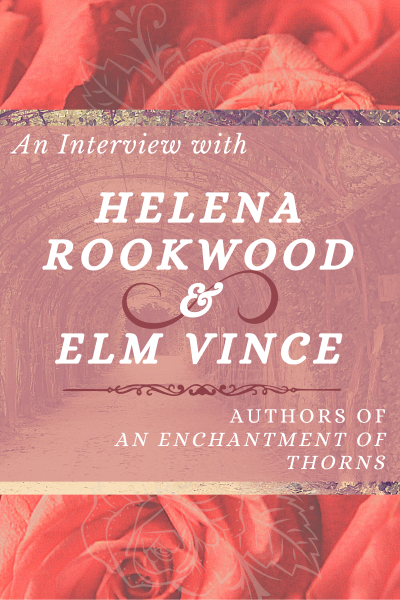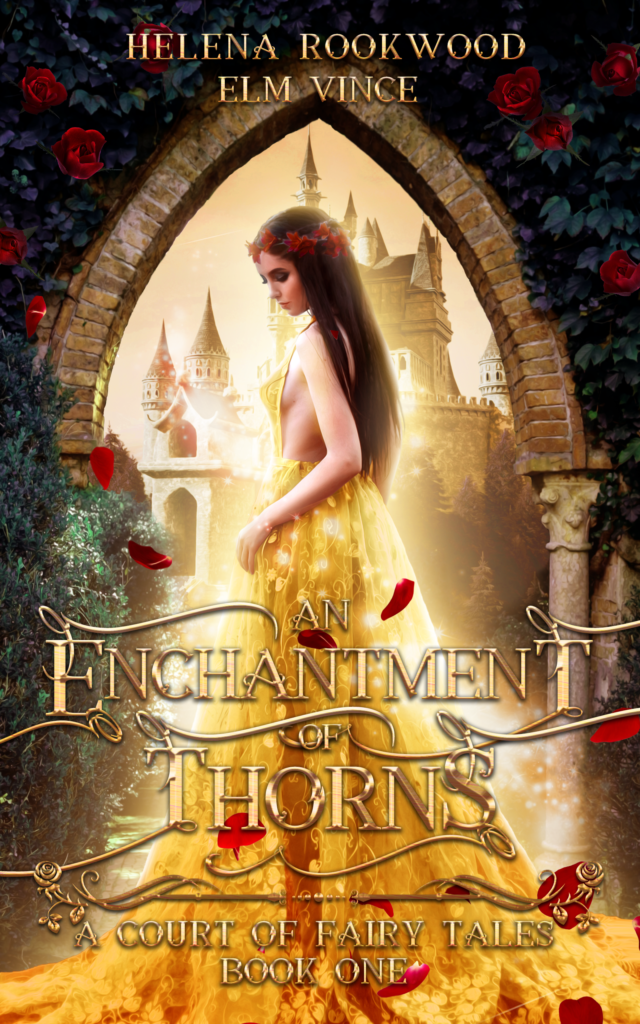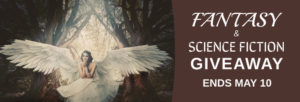Thorne is a really interesting Beast. I loved that he was humane and fair, yet you weren’t afraid to have him outright annoy Aster and have his bad moods, too. What are your favorite things about Thorne?
Helena & Elm: Thorne has a lot to learn from Aster. When we meet him, he’s kind of given up hope that the curse will ever be broken, but he hides that with this detached, often insolent, persona. The more you find out about his backstory, the more you realize there’s a lot of depth to him and why he acts the way he does.
He’s spent a lot of time wallowing in self-hatred, but Aster brings him back to himself. We like how they challenge each other, but in a good way.
As you were developing An Enchantment of Thorns, did Thorne always walk the line between dangerous and misjudged, or did he skew more in one direction more than the other?
Helena & Elm: We actually had quite a tough time with Thorne, exactly for the reason you stated. We knew we wanted to make sure he was really fae—and for that to mean he would act in a way that wasn’t always human, not just for him to be really powerful or beautiful—but we also wanted to make sure he wasn’t totally unlikeable.
In the beginning, he probably skewed too far in the direction of being dangerous, so we ended up adding in sections to make his character feel a bit warmer during the editing process.
Helena, you’re two books in to the Carnival of Fae series (The Prince and the Poisoner and The Thief and the Throne), and Elm, you have the Star Cast series (Tapestry of Night), which provides another take on the fae. So clearly you’re both drawn to stories involving fae! What is it about fae that inspires you both?
Elm: I think for me, it’s the creative range. You can have these monstrous kinds of creepy folk that you see in, say, Holly Black’s writing, or the beautiful, almost elf-like High Fae in Sarah J Maas’s worlds. We wanted to include both in our world and explore different types of faeries.
Helena: I love anything involving fairy tales and folklore, so fae books are a natural way for me to explore those interests in my writing. Weaving mythology and plant lore into my books are two of the things I enjoy most, and I find them a big source of inspiration.
The Carnival of Fae and Star Cast series each point to future encounters with fae characters, but haven’t introduced any yet. They share a concept of fae being separated from humans. But in An Enchantment of Thorns, Aster and Laurel have direct encounters with fae from the beginning. How different was it to write a story where fae and humans are neighbors?
In both of our previous series, those worlds had been shaped by past interactions with the fae. That made our world in An Enchantment of Thorns very different to write as we were setting up the fae world and the human world at the same time, so had to give both equal weight!
Both of us enjoyed writing a world where the fae were present from the outset—so you might see more of that from us both in the future.
What’s next for each of you?
Helena: As well as continuing to work on the sequels to An Enchantment of Thorns, I’m also currently reworking an old series that will be re-released under the series title Faerie Awakens later this year. It was the first series in the genre I wrote, and I (shamefully) never got around to writing the sixth and final book, so readers have been waiting a long time for me to get back to this one! Having left it for such a long time, I’ve struggled not to see all the things I’d do differently, so it’s turned into a larger rewriting project than I imagined it would be.
Elm: I’m working on Herald of Fire, the second book in my Star Cast series. I’m also excited to continue with the A Court of Fairy Tales series this year. We have two more books planned following Aster, before moving onto other fairy tales featuring her sisters. The second book, A Trial of Thorns, is already written, so readers won’t have to wait too long to continue Aster’s journey with us!
Thank you for joining me today. I’d like to wrap up with a fun question and a bit of a challenge. Please complete the following sentence individually:
And they lived happily ever after…until the next book, where we throw more drama their way!
(I know you said to write this individually, and we did, but we’d basically written the same thing. That’s how in sync we are!)
